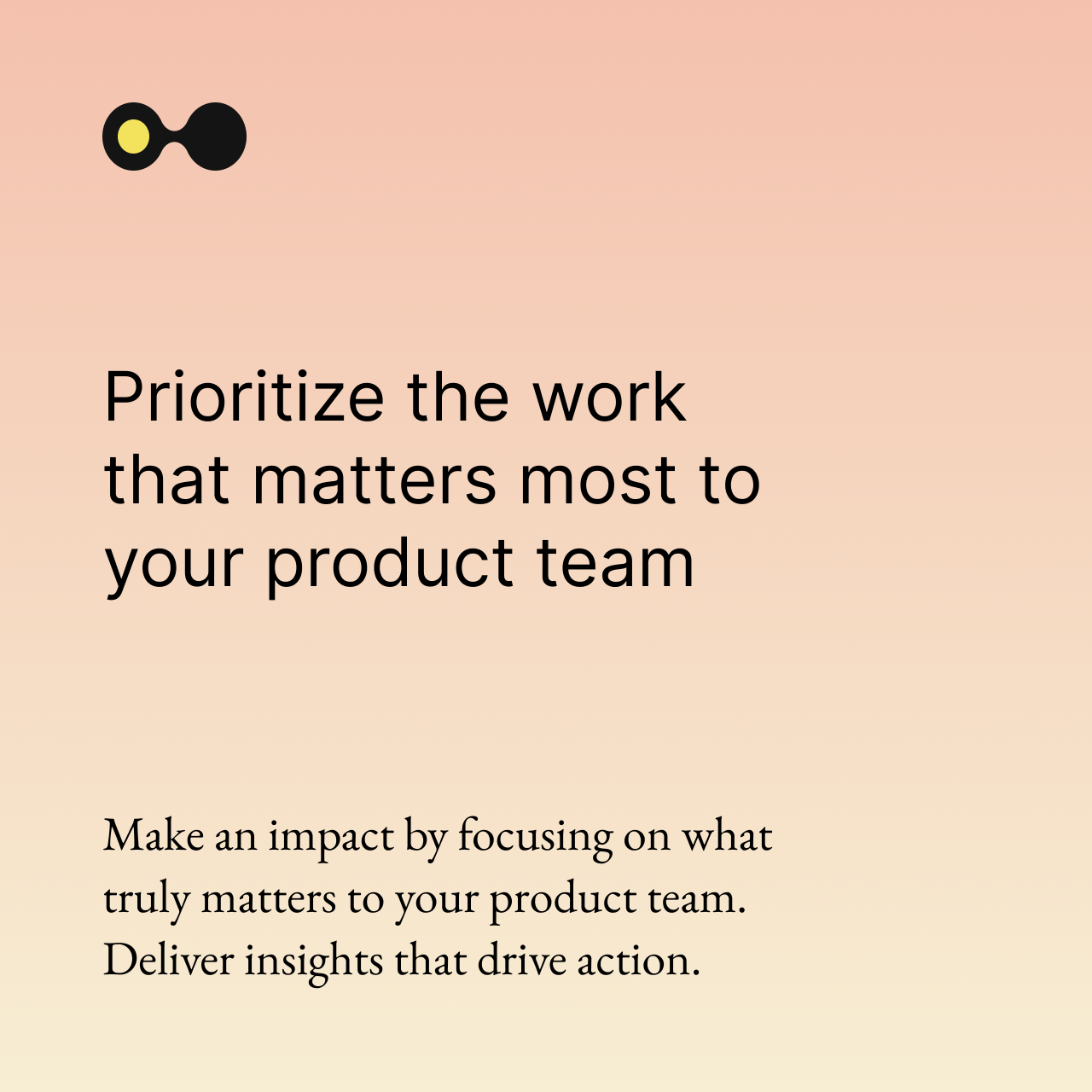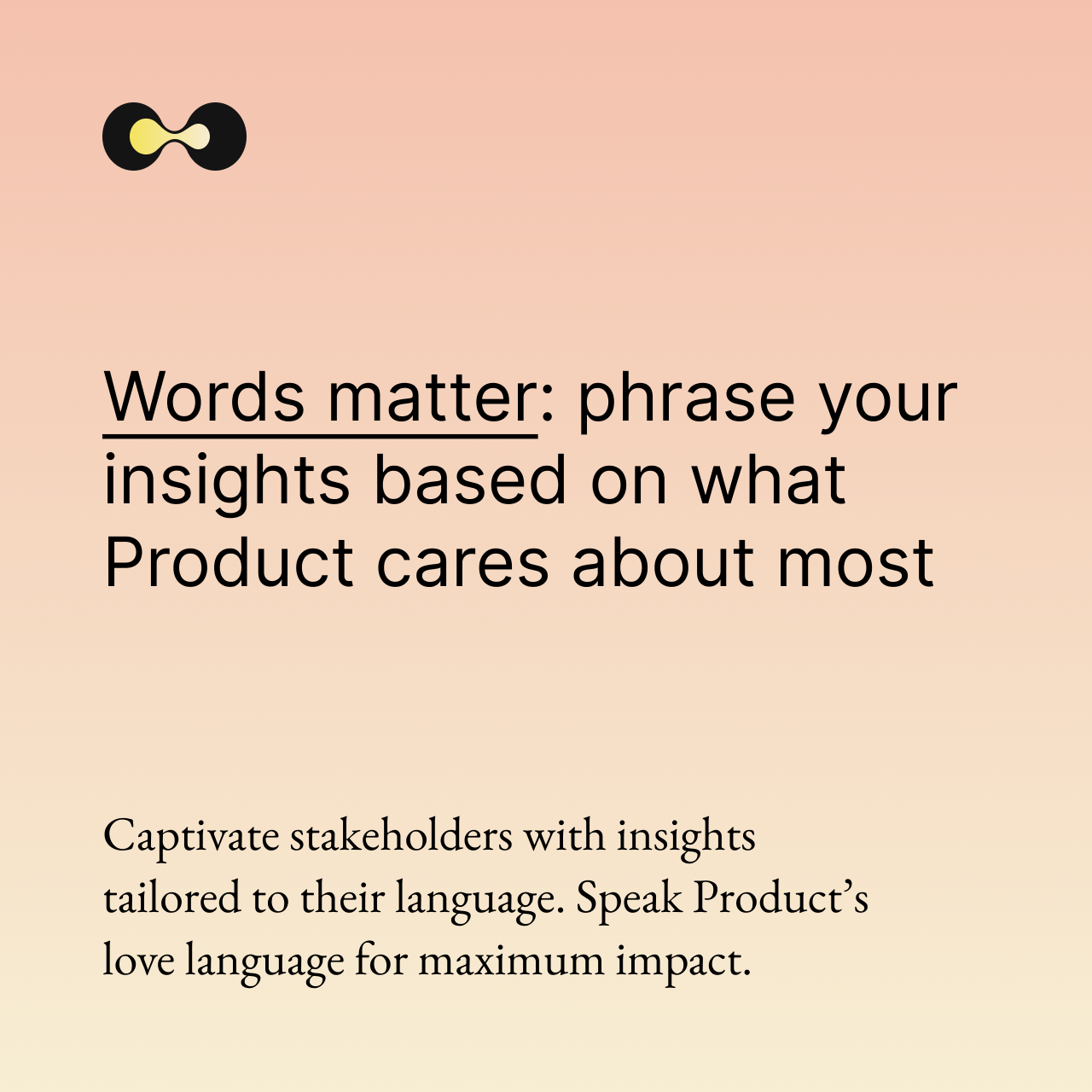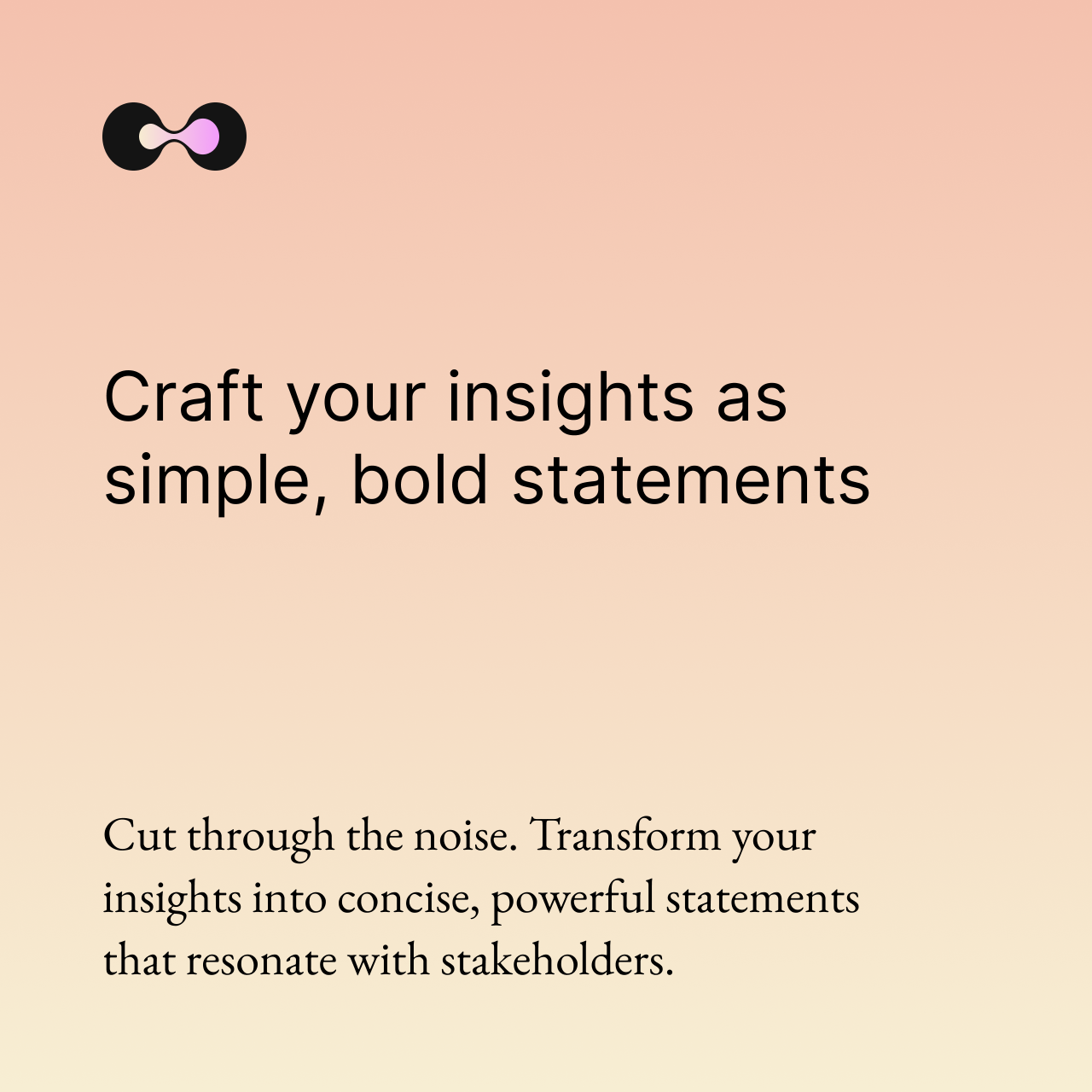The art of creating insights that connect

Connection.
This guide will give you the strategy you need to land insights with stakeholders for maximum impact.
When I started my journey as a user researcher, I was so overwhelmed by perfecting my core research skills, I couldn’t see my biggest hurdle. Here's the thing—you can hone your research skills if you’re determined—it’s within your control.
The actual hurdle that researchers struggle with the most is creating insights that land with stakeholders enough to have real impact.
At the end of the day, this is difficult because product decisions are often made by someone else. Your locus of control is limited.
But that doesn’t mean that you can “do your best” and “see how it goes.”’ Over the past couple of years, I’ve learned just how much a researcher can do to create, present, and advocate for insights so they have a much better shot at influencing product decisions.
Let’s discuss.
Prioritize the work that matters most to your product team
In some ways, this is a no-brainer. Of course, you don’t want to choose research projects that your product team doesn’t care about. Getting this exactly right, though, depends a lot on nuance.
For example, it could be that you have two potential projects in the pipeline, both of which were requested by the product team themselves.
One explores potential UX issues for a flagship feature. The other would provide pre-release insights and recommendations for a high-investment new feature designed to impact an important KPI. In other words, it’s a big bet for product.
Go where the buzz is.
In this case, strongly consider choosing product’s big bet. When a lot of resources have been invested, the whole company is buzzing about it, and a key business metric is meant to be affected. You can be pretty certain that they’ll be open to hearing about any important insights that you find if it could impact the success of their big release!
Words matter: phrase your insights based on what Product cares about most
We have to have the integrity to give over the truth. We can’t bend insights so that they are 90 percent truth and 10 percent what our stakeholders want to hear.
That being said, we often have more agency than we think when we choose how to phrase our insights and recommendations.
The most impactful way I’ve found to exercise my own agency when it comes to research results is to allude to KPIs in my insights and recommendations. For example, add words to your recommendation like “there is a reasonable hypothesis that this iteration could positively affect the paid conversion rate.”
Often, we assume that stakeholders seeing results and taking our recommendations is obvious. Even if it is, seeing the words spelled out is a psychological strategy for capturing sustained attention.
Invoking paid conversion rate or another key metric is much more likely to land your recommendation a spot on product’s to-do list.
Push your insights into the tools your stakeholders use every day
Connect Dovetail to tools like Slack, Productboard, Notion, and Jira, and put your findings where your team already lives and thrives.
Sign up for a free trial
Craft your insights as simple, bold statements
Sometimes, in order to cover our bases and avoid the risk of taking a stand, we make statements that feel safe—but fail to inspire. For example:
Some users were confused by this screen. We should consider revisiting the copy to make it more explanatory.
On the surface, this is okay. In reality, when I’m a product manager with hundreds of potential tasks to work on, words like “some” and “should consider” don’t exactly light a fire under me. Something like this insight and recommendation may work better:
This screen generated a lot of confusion for users. We recommend testing new copy to see the impact on paid conversion rate.
Here, we’re not inviting stakeholders to wonder, “Okay, but if it was just some users, maybe it’s not a big deal?” or “I don’t know if I’d prioritize a simple copy change.” Rather, we’re making the bold statement that enough confusion occurred among research participants to warrant action that could positively affect the KPI that we care about.
Tip: if you’re feeling uncomfortable about making a bold statement, check in with yourself. Are you lacking confidence for no good reason? Or is it possible that you need some more data in order to make the call confidently?
Generally speaking, if we only feel comfortable making a lukewarm statement that won’t confidently guide product in a specific direction, we need to make a change.
Sometimes that means mustering up the self-assurance to say what we know to be true. Other times it means we haven’t collected enough data.
Work doesn’t end after delivering your insights
While the strategy behind what we prioritize and the words we use to communicate insights is key, you won’t land recommendations on product roadmap real estate by finessing your report or presentation.
The reality is we have to follow-up and involve ourselves in relevant processes to ensure our recommendations are not forgotten or dismissed. What exactly this means depends on the culture and structure of your organization, but here are a few suggestions:
- Schedule a follow-up meeting with the main stakeholder for a week or two after you present results. Agree on what you’ll come to the meeting with (perhaps the stakeholder will bring estimated dev time for one of your main recommendations before you meet, for example)
- Offer to do some leg work. For example, if a stakeholder isn’t sure whether something you’re suggesting is practical from a tech perspective, offer to have a conversation with the tech lead. This means less work for the stakeholder, and if you find that it is feasible, you’ll have yet another opportunity to advocate for your recommendation
- Make sure other stakeholders are aware of your insights and recommendations. For example, if the main stakeholder was a product manager, make sure you distribute your results to the design team and developers as well. This increases the likelihood you’ll create internal advocates other than yourself





How do you know if you’ve been successful at creating impactful insights and recommendations?
I’ll state the obvious: if your recommendations are utilized, congrats—you’ve made an impact! If your suggestion led to a KPI improvement, even better. But to know, you have to stay on top of it, whether it’s via Slack channels or other integrations that keep you informed about what’s going on in product.
Beyond that, sometimes your insights will have impact that isn’t top seat on the product roadmap yet. Here are some other good indicators that you’re making an impact:
- Your reports are linked or referenced in PRDs or presentations by the product team and used as part of the story or rationale for a feature or initiative
- Stakeholders other than the main points of contact for a given research project are asking you about your insights. This means someone saw it as important enough to spread the word
- You’re asked to present your work to teams outside of product. This shows your insights can provide value to stakeholders in other places, such as marketing or senior management
It’s often mentioned that user researchers are forever chasing more impact—and with good reason. “Understanding” has no inherent value without action in a business environment.
Increase your impact by prioritizing your work based on what matters most, evoking stakeholder goals every chance you get, making bold statements, and not jumping ship after your deliverables are delivered.
Subscribe to Outlier
Juicy, inspiring content for product-obsessed people. Brought to you by Dovetail.